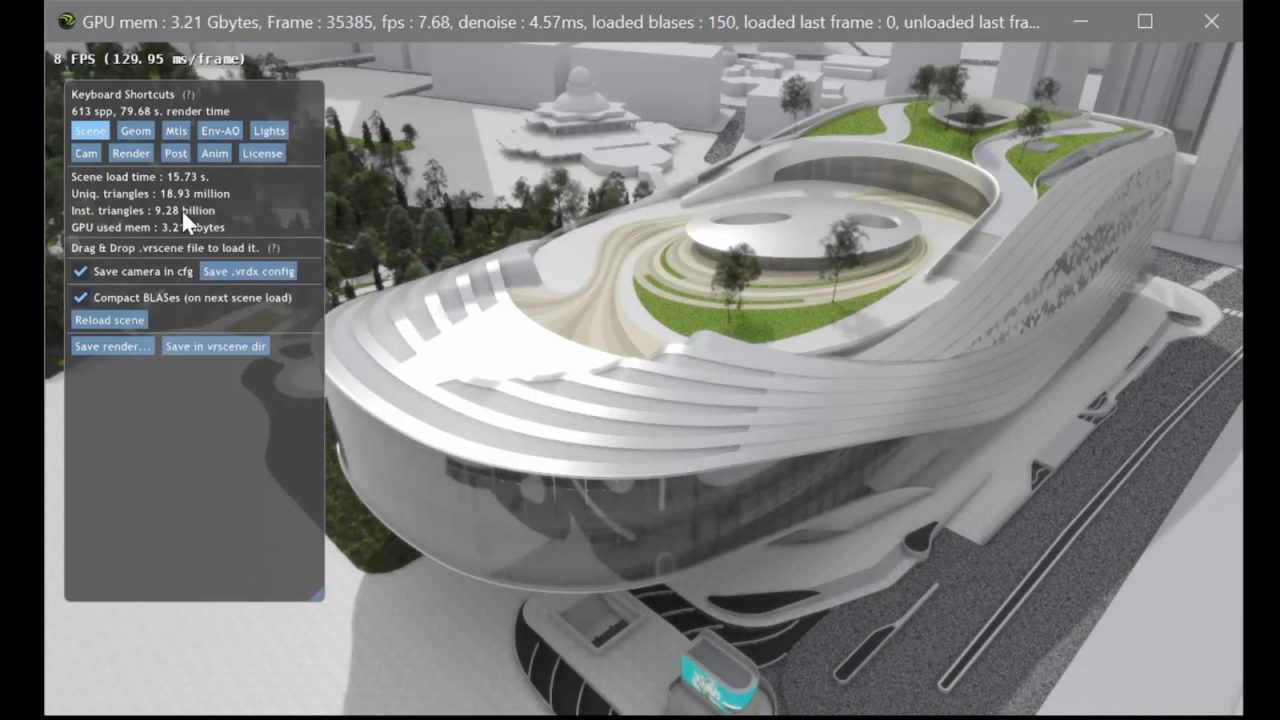After meeting industrial designer Cobus Bothma, you’d be forgiven for assuming he works in the gaming industry or Hollywood.
He’s a big proponent of VR, AR and GPU computing. But Bothma is the director of applied research at Kohn Pedersen Fox, a New York-based global architecture firm whose work includes the city’s Museum of Modern Art.
Bothma discussed KPF’s latest GPU-powered rendering projects and use of NVIDIA Holodeck, our virtual reality collaboration environment, at the recent GPU Technology Conference.
Rendering with RTX
To create computer-generated images for architectural designs, KPF is exploring real-time ray-traced rendering on workstations powered by the NVIDIA Quadro RTX 6000 GPU.
Bothma showed the GTC audience a rendering that had been generated using a test version of the nascent Project Lavina rendering software, which was designed to harness the dedicated ray tracing silicon of NVIDIA Turing GPUs.
It was a detailed scene that had been rendered in real time on a single RTX 6000, showing a KPF-designed building, along with a landscaped park with flowers, grass and trees that had a depth of appearance from the shading.
The software was developed by Chaos Group, an early adopter of NVIDIA’s Turing architecture-based GPUs. KPF’s rendering work with Project Lavina was an effort to test the limits of hardware and software, running 9 billion shade instances of triangles and 19 million unique shade triangles in real time.
Design Iterations
GPUs are accelerating design iterations at KPF. Architectural projects come with an extensive list of requirements from clients, city codes, local governments and others. For example, the client might require a certain amount of green space and sunlight for a space. A project might have specific high-density requirements such as tall buildings or low-density configurations that allow more open space.
In the past, that required a designer to manually model, analyze and adjust work — and then continue to adjust and analyze to find the best solution. This was labor and time intensive, and would typically require multiple iterations.
With KPF’s workflow, when designers leave work for the night, they can run the project parameters and let the workstations not only model, analyze and iterate designs, but also produce the rendered results in real time.
This can create thousands of iterations rendered overnight on GPUs to match the brief’s requirements and allow the architects to filter the best solutions based on parameters and results to progress the early stages of the design.
Holodeck Teamwork
KPF uses NVIDIA Holodeck for photorealistic VR collaboration and internal communications on projects. This allows team members to review multiple design options before presenting the best options to clients.
The Holodeck VR environment includes sensations of real-world presence through sight and sound. It enables remote team members to “walk around and through” architectural models and communicate and collaborate in VR sessions with other people in a much more interactive fashion than traditional video conferencing.
“Holodeck allows us to look at designs in detail,” Bothma said. “We can move components apart and understand the structure underneath it. It will transform the way we collaborate on international projects over the next years.”
